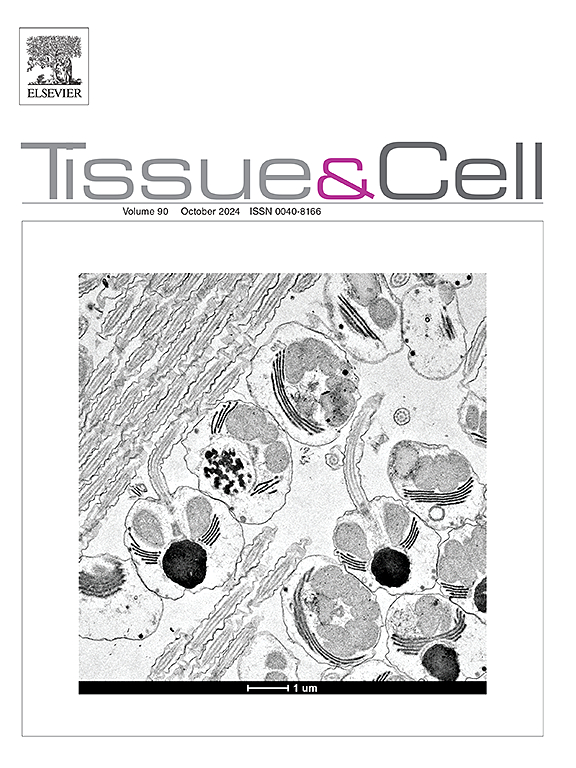The role of mesenchymal stem cells‐derived from oral and teeth in regenerative and reconstructive medicine
IF 2.7
4区 生物学
Q1 ANATOMY & MORPHOLOGY
引用次数: 0
Abstract
Defects and abnormalities of the skull, jaw, and face tissues due to various physiological problems such as speech, chewing, and swallowing disorders, cause illness and psychological effects with creation of significant public health challenges. Both autograft and allograft reconstruction methods, have different limitations, especially in the complete reconstruction of complex tissues such as sensory and periodontal tissues, which cannot be wholly relied on for treatment. Recently, mesenchymal stem cells (MSCs)-derived from oral and teeth have emerged as a promising alternative way in regenerative and reconstructive medicine. These types of stem cells with the high differentiation potential and self-renewal capabilities include dental pulp stem cells (DPSCs), stem cells from human exfoliated deciduous teeth (SHEDs), periodontal stem cells (PDLSCs) and gum-derived stem cells (GMSCs). These stem cells can be easily collected from accessible and numerous sources, such as extracted molars and milk teeth, with minimal invasiveness, playing pivotal roles in clinical application. This review explains the applications and therapeutic effects of the above-mentioned MSCs-derived from oral and dental tissues. Each of these stem cells, have unique characteristics and used for the treatment of specific abnormalities and defects. In this article, we aims to elucidate the indispensable and pivotal roles of MSCs-derived from the oral and teeth in addressing intractable and complex challenges in restorative and reconstructive medicine.
求助全文
约1分钟内获得全文
求助全文
来源期刊

Tissue & cell
医学-解剖学与形态学
CiteScore
3.90
自引率
0.00%
发文量
234
期刊介绍:
Tissue and Cell is devoted to original research on the organization of cells, subcellular and extracellular components at all levels, including the grouping and interrelations of cells in tissues and organs. The journal encourages submission of ultrastructural studies that provide novel insights into structure, function and physiology of cells and tissues, in health and disease. Bioengineering and stem cells studies focused on the description of morphological and/or histological data are also welcomed.
Studies investigating the effect of compounds and/or substances on structure of cells and tissues are generally outside the scope of this journal. For consideration, studies should contain a clear rationale on the use of (a) given substance(s), have a compelling morphological and structural focus and present novel incremental findings from previous literature.
 求助内容:
求助内容: 应助结果提醒方式:
应助结果提醒方式:


